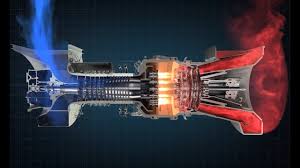So far 2025 has seen a lot of “pivoting” away from clean energy and toward natural gas. Los Angeles Times writer Sammy Roth recently documented one such pivot, by wind energy champion and conservative billionaire Phil Anschutz. Tech industry giants who led the charge toward procuring “100% clean energy,” like Meta and Google, are also exploring the use of natural gas to power their energy-gobbling data centers (see e.g., here and here). Some utilities may be backing off their aggressive decarbonization goals, and BP has “dropped its green pledges” in favor of more focus on its core oil and gas business.
Nor are these pivots limited to the private sector, or to red states. A California regulator recently rejected a smog-fighting proposal to phase out gas appliances, citing affordability concerns. High electricity rates in New Jersey have gubernatorial candidates there distancing themselves from Governor Phil Murphy’s energy transition policies. The State of New York may be poised to approve construction of a natural gas pipelines connecting gas production centers in Pennsylvania with demand centers in New England, something the State has steadfastly refused to do since it banned the use of fracking to produce gas in 2015. Some other blue states are relaxing their decarbonization plans in various ways. And New Zealand has reversed its ban on offshore oil and gas production, citing worries about natural gas shortages.
What is going on?
The reasons behind these pivots are many and varied, but two factors figure prominently in the answer to that question. One is that consumers place a higher priority on reliable, affordable energy than on clean energy. In some situations decarbonization plans are in tension with those other goals, depending how market rules influence the availability and cost of backup power from less weather-dependent sources. Politicians and firms know this, and their futures depend upon keeping those consumers happy.
The other is that the Trump Administration is leading a multi-pronged, ferocious GOP attack on renewable energy and the very notion of a clean energy transition. It has triggered a precipitous drop in GOP support for renewable energy over the last five years, one that includes young Republicans. This may be an example of partisanship driving views, and seems consistent with GOP’s increasing tendency to define itself in opposition to what Democrats want. Companies see this happening too, and they are adapting to this new reality.
Does that mean that the energy transition is doomed? Certainly not, though it will be slower than some had hoped.
After a long period of rallying rhetoric in the discourse around the clean energy transition, more and more Democrats are now willing to talk openly about the tradeoffs between rapid decarbonization, on the one hand, and energy reliability and affordability, on the other. Suddenly the term “energy abundance” is everywhere, and its popularity is a partly an acknowledgment that no transition will happen if voters associate it less available or more expensive energy.
In the long run more transparency will be helpful, and will make the energy transition more durable. Meanwhile, the long list of solar, wind and battery projects seeking to interconnect to the grid demonstrate that there remain win-win opportunities to invest in clean energy. Repeal of all or parts of the Inflation Reduction Act will reduce the number of those opportunities, but there will still be many places where they can be had.
Some low carbon technologies may even get a boost from the new regulatory environment. The Trump administration seems to like nuclear power and to hate regulation. So, it may be willing to lower regulatory barriers to approving new nuclear powerplant designs or construction of new plants. And the new Secretary of Energy seems to like geothermal power, and seems inclined to want to hasten its development. Both of these technologies promise relatively firm (or dispatchable) carbon free power at the generation stage, and both need a boost to compete on price in electricity markets. So far, it looks like the Trump Administration may give them that boost.
At the same time the GOP’s sharp turn against clean energy is producing some nonsensical decisions and policy proposals. The president has ordered several inefficient coal-fired power plants that would otherwise have retired to remain open. This is a lose-lose proposition. Not only is coal-fired electricity more damaging to human health than any other electric generation technology, it is one of the more expensive technologies as well.
Not to be outdone, some red state legislatures have considered bills that would both increase electricity costs and jeopardize electricity reliability. A bill came dangerously close to passage in the 2025 Texas legislative session that would have required existing renewable energy power plants to have back up back up power supplies (other than batteries) to provide energy when the sun doesn’t shine and the wind doesn’t blow. In the end the bill failed, presumably because it would result in the loss of generating capacity at a time when growth in demand is skyrocketing. (See Doug Lewin’s Texas “grid roundup” site for the best coverage of these issues.)
Ironically, the same data centers and other forces responsible for projected increases in electricity demand may be protecting existing and proposed wind and solar projects from the GOP ax. These projects help keep the lights on, and they are cheap to operate. That they require backup from less weather-dependent resources doesn’t change that fact. Furthermore, building more natural gas-fired generation will take time, because natural gas turbines are on multi-year back order.
These are the sorts of real-world constraints that intrude on the neat pro- or anti-clean energy narratives that dominate much of the public discourse. This is an auspicious time to transition to cleaner forms of energy; but that task nevertheless requires tradeoffs. Many of the Trump Administration’s attempts to put a thumb on the scale for fossil fuels have no business or public policy justification. At the same time, the pivot toward natural gas is also partly a concession to need to provide consumers (a/k/a voters) with affordable, reliable energy in a time of historic growth in electricity demand. – David Spence





